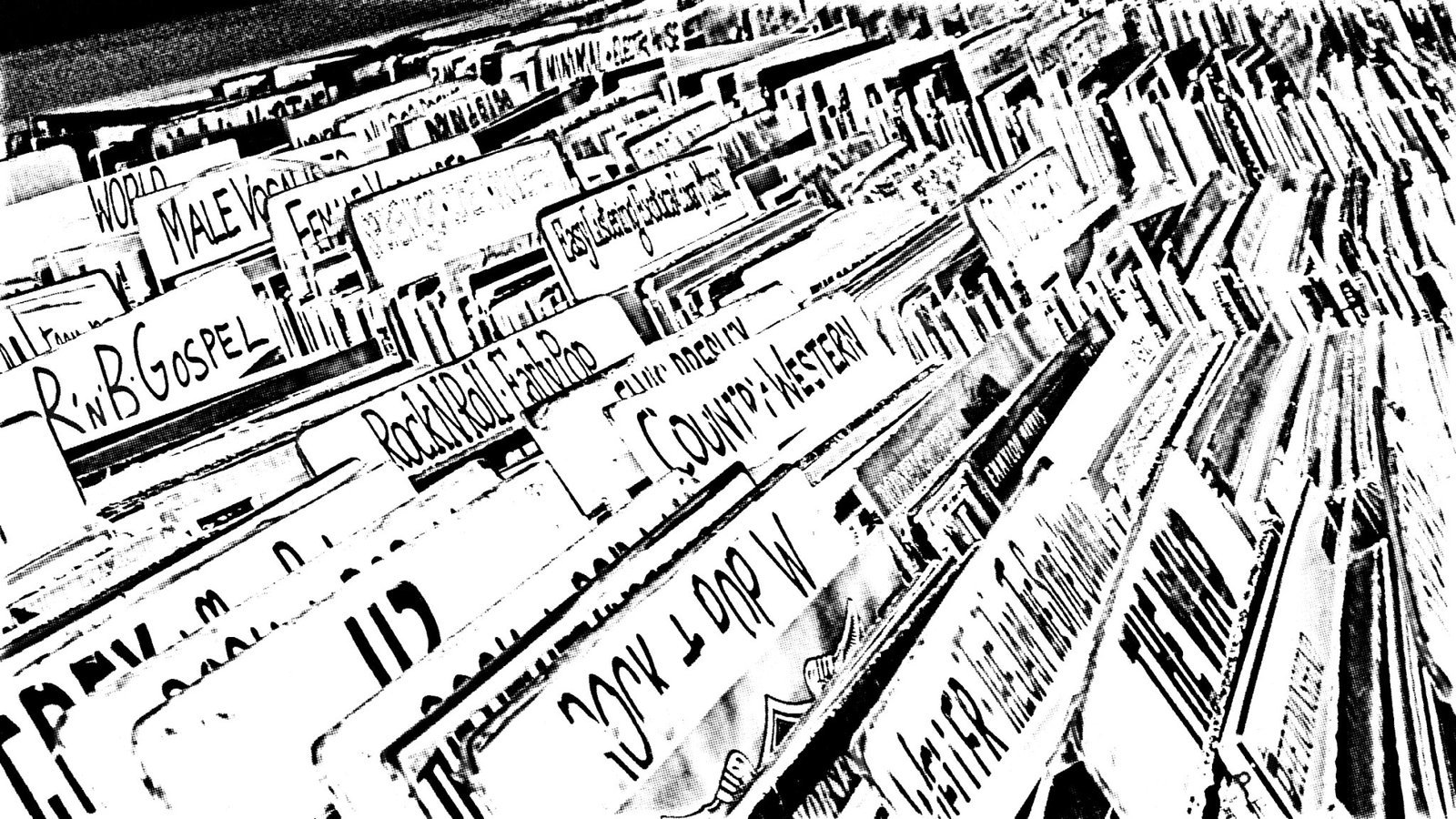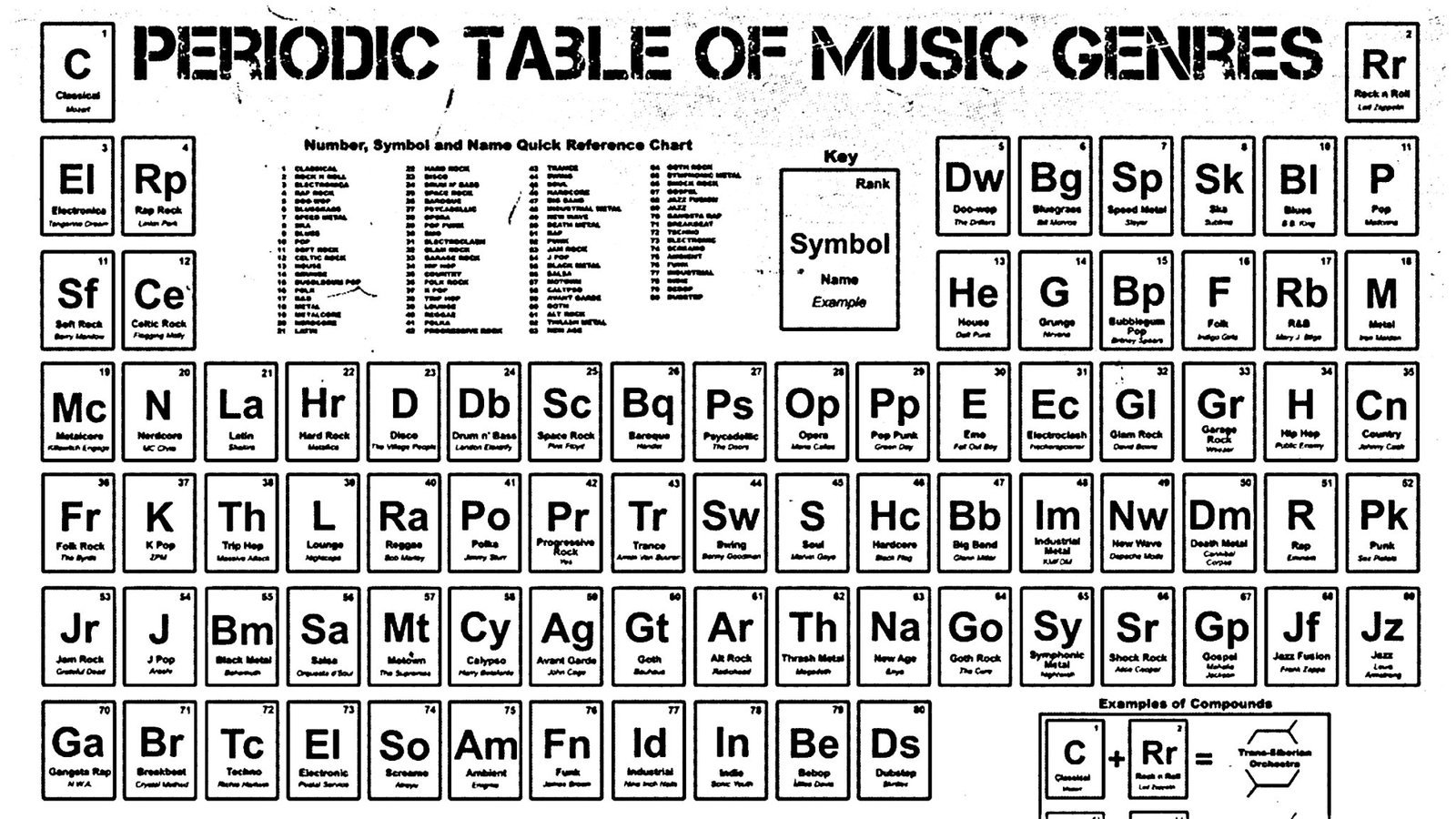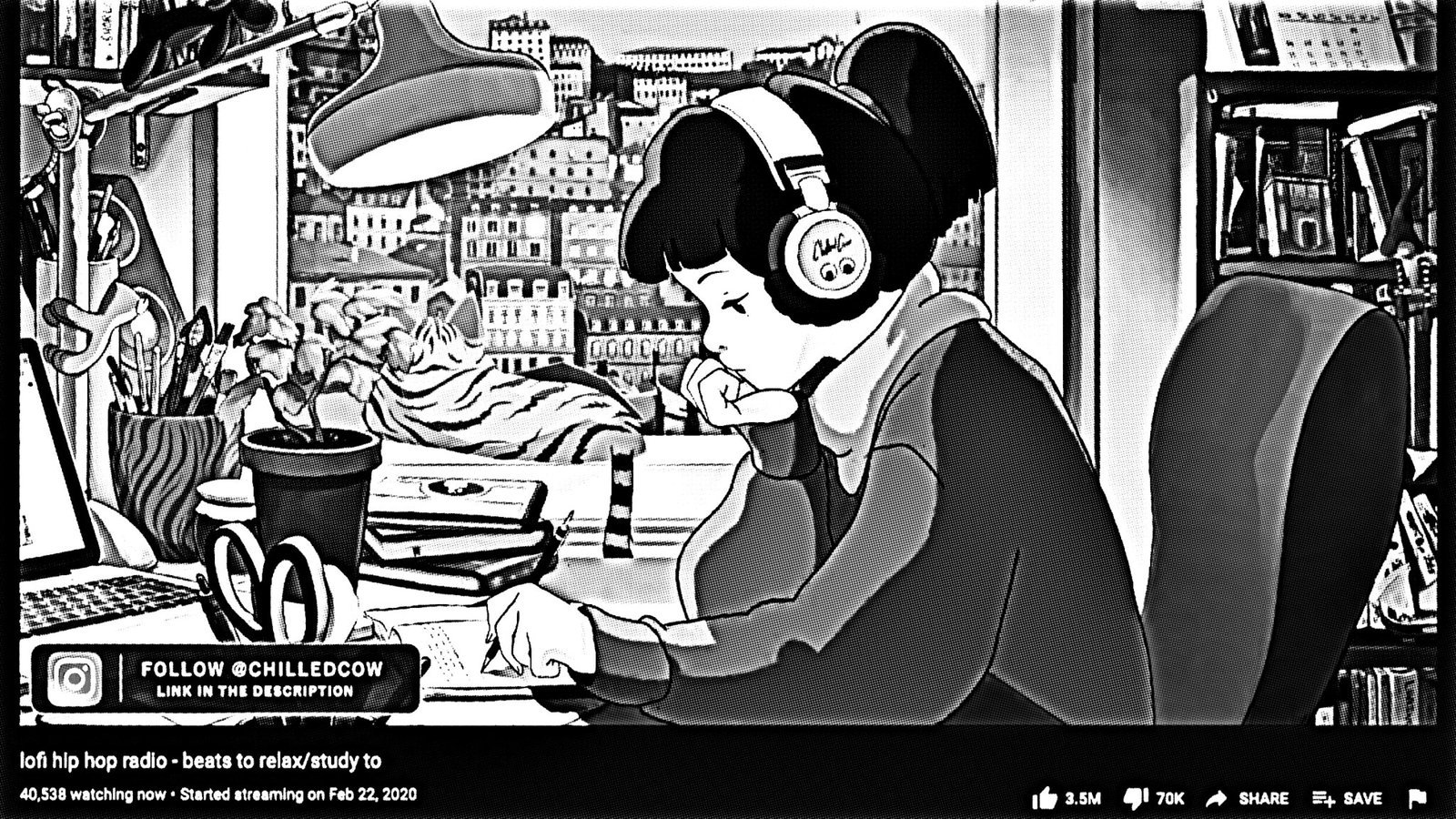
Like end-of-the-year best-of lists, new genre names are something that music fans love to hate. There’s a mixture of disdain for perceived pigeonholing and a failure to keep up with the latest trends — nothing makes a music lover feel older than a new, incomprehensible genre. Then there’s the sub-genre and the micro-genre. Seriously, it never ends. It’s genres all the way down.
Instead of feeling intimidated, I say embrace the genre and all its fancifully named layers. Genre is an identifier, important in pointing the way and gluing together scenes. There was a time that you could walk into an indie record store, look at the clientele, and guess what genres they listened to by how they looked. It’s harder now that genres are less-defined and blur together — which I’ll argue is a good thing. But it’s also why genres are reaching beyond sonic vibes and sounds, increasingly representative of technological innovation, communities, and desired lifestyles.
If you’re a musician, there’s nothing worse than the question, “What do you sound like?” We shuffle our postures and avoid answering, or vaguely go for something broad like “rock music.” If you look up old artist interviews with me, you’ll see I often responded with “funk,” which was unfortunate. Why can’t we just own our genre — or create our own? Consider the genre as an elevator pitch. It’s a chance to claim a plot of land and plant a flag.
Here’s how Seth Godin thinks about genre, as explained in his recent appearance on The Moment with Brian Koppelman:
“People who are creatives bristle at the idea of genre because they think it has something to do with generic. It has nothing to do with generic. It’s the opposite of generic. Genre means that you understand your part in the chain — [and] in the process, in the market — well enough to make something magical that still rhymes with what came before. You’ve done the reading. You respect the audience enough that you can’t just show up and say, ‘This is like nothing you’ve ever seen or heard before.’ It actually is where it belongs.”
——————
It’s fun to look at the birth of genres. The sounds predate the descriptive monikers, often by many years. Traditionally, genres are christened through these sources:
- An artist or band name. Bill Monroe’s Blue Grass Boys is where we get bluegrass.
- Song or album titles. Ornette Coleman’s 1960 album Free Jazz and The Maytals’ 1968 single “Do the Reggay” popularized those terms.
- Compilation album titles. A ‘scene’ is pre-built into the curated collection of artists, such as the now-legendary producers assembled on 1988’s Techno! The New Dance Sound of Detroit.
- Lyrics. “I said a hip-hop, the hippie, the hippie to the hip, hip-hop and you don’t stop …”
- Record labels. In the late ’80s, you would’ve called Skinny Puppy something else if Throbbing Gristle didn’t start Industrial Records.
- Music Journalists. Simon Reynolds is the ninja of the genre name and is still at it. But even before, there was ‘heavy metal,’ applied to music for the first time in 1970 by Mike Saunders, future vocalist of punk band Angry Samoans. Writing for Rolling Stone, he referred to Humble Pie as “27th-rate heavy metal crap.” Ironically, Sauders did not come up with ‘punk rock,’ which was coined the same year in Creem Magazine.
- Music Executives. Seymour Stein of Sire Records came up with ‘new wave’ to market all these bands he was signing fresh off the stage of CBGBs.
- The technology. Dub comes from ‘dubplate,’ which is technically a music-delivery format. But dub is hardly ever heard on a dubplate these days.
- Territory. We can call music from Guatemala Guatamalen music even though the locals undoubtedly have a more specific name. And the ‘western’ in country & western refers to the western US where many rural workers migrated and settled, especially during the Dust Bowl.
- Radio. Famously, Alan Freed named his radio show The Moondog Rock’n’Roll House Party. Like in many of the examples above, Freed didn’t use the phrase first, but he popularized it.

There’s one more traditional method of genre creation, which I hinted at in the beginning. The artist comes up with it herself. There’s a lot of power in naming your genre as, if you’re successful and others catch on, you become the forebear. Fela Kuti did this with Afrobeat. And Brian Eno did this with ambient music:
“All the signs were in the air all around with ambient music in the mid-1970s, and other people were doing a similar thing. I just gave it a name. Which is exactly what it needed. A name. Giving something a name can be just the same as inventing it. By naming something you create a difference. You say that this is now real.”
Quick side story: in the late-90s, a friend and I often DJ’ed trip-hop records and hip-hop instrumentals with the turntables pitched up near +8. Speed garage was the genre du jour at the time, so we jokingly named our genre ‘speed downtempo.’ It didn’t take off.
But, yes — sometimes a joke or off-handed comment will spawn a genre name. NYC’s DJ Olive came up with ‘illbient’ as a sarcastic response when a journalist asked if he played ambient. And Gilles Peterson famously once joked that his side room at an acid house party was the ‘acid jazz’ area, birthing a repackaged jazz revival.
Genre is intrinsically tied to the music it denotes but spreads out to other qualities of the genre’s followers. Goth is as identifiable for its fashion as its sound, and close-knit genres like nerdcore are increasingly identified by membership in their communities.
What’s interesting — with technological developments inseparable from how we interact with music — is the emergence of genres outside of a musical style. That is, the communities or the platforms define the genre, and the music comes later.
——————
I want to look at a few recent arrivals in the pantheon of genres to see how defining our music ends up describing so much more. Be warned — many of these sub-genres contain references to other sub-genres. You might get genre whiplash.
Hyperpop
On the excellent Jaymo Technologies blog, Jay Springett writes about the daunting proliferation of genres and how streaming platforms affect genre creation:
The world is now dominated by microgenres and subcultures, shaping perception of reality via niche hashtags and network effects. For better or worse someone at Spotify finds or makes up a genre name and then populates a playlist with content. The idea that people would be mad about an online genre having a name and coming from nowhere now seems quaint.
Jay is possibly hinting at hyperpop, a genre name popularized by Spotify via the in-house playlist of the same name. The actual sound of hyperpop is debatable and evasive, with many of its elements drawn from vaporwave, an older genre (by a few years) but somewhat more explainable. There’s a Gen Z do-it-yourself aesthetic, and many of hyperpop’s ephemeral stars are in their early teens. Lizzy Szabo, who helps curate the playlist, understands that hyperpop is “an artist and listening community” as much as it’s a musical genre. One thing to notice about that quote: the listeners are included in the definition, powering hyperpop alongside the creators. To participate, throw aside any reservations about a movement dreamed up by a big corporation.
Glitchcore
Glitchcore shares many of the artists found on the Hyperpop playlist. Its defining sonic trait is the ‘glitch’ — quick edits, stuttering vocals and syllables, things that would have once made us check our compact discs for scratches. Some even take hyperpop songs and add these ‘defects’ for glitchcore remixes. But glitchcore’s difference is in its inspiration and intention. TikTok videos, with visual glitches matching the audio ones, along with bright colors and flashes, are the reason and original platform for most glitchcore tracks. Like how a TV signal popping in-and-out changes the quality of a show’s dialogue, it’s a visual aesthetic influencing the sound. Glitchcore is a genre given shape by a video editing technique mixed with a nostalgia for digital’s early days of jarring imperfection.
Lo-Fi Hip-Hop
Like hyperpop, lo-fi hip-hop (or lo-fi beats, chill-hop, or, sometimes, ‘music for studying’) gets its name from a curated spot on a streaming platform. In lo-fi hip-hop’s case, these are streaming channels on YouTube playing an endless selection of music usually accompanied by a looping anime scene. A Gen Z variant of ambient music, lo-fi hip-hop is meant to accompany studying, video-gaming, or zoning out. This is another genre that’s expanded its popularity in COVID-times, with the studying girl of the ‘lofi hip hop radio – beats to relax/study to’ channel serving as a lockdown work-from-home companion. The music itself draws directly from boom-bap hip-hop and — for those in the know — the mellow side of ’90s trip-hop, but is more basic, often constructed from interchangeable sample libraries and beat kits. Lo-fi hip-hop is a diluted version of its predecessors, which is why it’s so effective as in-the-background focus music.

Bedroom Pop
Bedroom pop started as ‘what it says on the tin:’ pop music made in the bedroom. Its unexpected ancestor is the lo-fi indie movement of the ’90s, with bands like Sebadoh and Guided By Voices recording albums on four-track cassette recorders. Nothing kept those bands from visiting a studio, but the constraints inherited through four-track recording were integral to their sounds (and brands).
The bedroom pop aesthetic predates the pandemic but has unsurprisingly grown during months of lockdown. The songs are generally sparser and have an air of intimacy not found in your usual pop. Vocals are often delivered at an ASMR volume instead of belted out.
Billie Eilish is the patron saint of bedroom pop. She does record most of her music in a bedroom with her brother, though these raw tracks are then mixed in multi-million dollar studios. As you might have guessed, unlike the four-track to the lo-fi bands, the ‘bedroom’ part is no longer essential to this genre. As the bedroom pop artist Girl in Red says, “Pop bangers are being made in bedrooms and bedroom pop-ish songs in studios. It’s more about how it sounds than where it’s made.”
Slowed & Reverb
Slowed & reverb is one of the oddest new genres, its name a play on the seemingly ancient (a decade+ old) hip-hop sub-genre chopped & screwed. Slowed & reverb appropriates other songs, but instead of ‘glitching’ or ‘remixing’ them, the music is slowed down (‘screwed’) and then doused in reverb. Recent hip-hop tracks mostly receive the slowed & reverb treatment but, as an offshoot of vaporwave, cheesy ’80s AOR songs are frequent targets, too. This genre is all about the feelings evoked — listening is like being lost in a fog that’s hazy, nostalgic, dream-like, and druggy. It also tends to turn upbeat songs into melancholic sobfests.
Because slowed & reverb uses pre-existing songs, you can only find its ‘hits’ on YouTube, SoundCloud, and (sometimes) Bandcamp. The other platforms have copyright barriers, though some producers have gotten away with compiling slowed & reverb mixes and servicing them to Spotify as podcasts. In a recent development, a few artists are now commissioning official slowed & reverb remixes of their singles, so perhaps there’s growth potential after all.
(Are you interested in creating your own slowed & reverb track? There’s an app for that.)
Ambient Television
This is the newest genre on the list, coined by Kyle Chayka in The New Yorker last month. I’m fudging a little as ambient television is not a music genre but a television aesthetic that draws influence from the same well as lo-fi hip-hop. This example shows how, as with glitchcore, different mediums are interacting to create new genres.
Ambient television follows Eno’s maxim of “as ignorable as it is interesting,” or as Chayka explains, “something you don’t have to pay attention to in order to enjoy but which is still seductive enough to be compelling if you choose to do so momentarily.” These are the new breed of Netflix design shows or, as Chayka pinpoints, Emily In Paris — TV shows you can look away from to read that iPhone notification without feeling like you’re missing anything.
There are more intriguing ramifications here when thinking about how streaming influences the ways we absorb digital media. Here’s Chayka again:
Whereas the Internet once promised to provide on-demand access to limitless information and media to anyone willing to make use of a Google search, lately it has encouraged a more passive kind of engagement, a state of slack-jawed consumption only intensified by this past year’s quarantine ennui. Streaming companies once pitched themselves as innovators for offering the possibility to watch anything at any time, but do we really want to choose? The prevalence of ambient media suggests that we don’t.
——————
Genre-chasing can seem ridiculous. But, as you see, the names we use to bond music together says everything about how we listen. New genres are a commentary on the present culture. And old ones are an archeological dig. As Seth Godin said at the top of this essay, genres help us understand our “part in the chain.” That goes for the fans as well as the musicians. Genres decode the links formed through technology, platforms, fashion, and community. Embrace the genre.
Here’s a music genre list to scroll through. And here’s an interactive genre chart provided by Every Noise at Once. The latter offers audio samples but keep in mind the music is only part of the story. Chances are both lists are seriously behind on all of the new genres, even if they were up-to-date a week or two ago.

